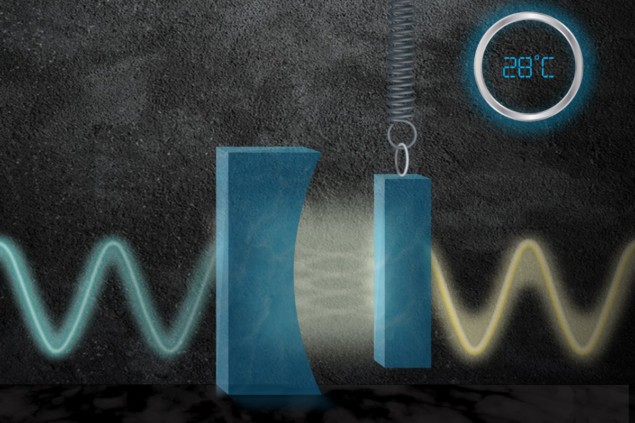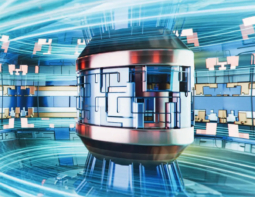
An optomechanical device that adjusts – or “squeezes” – the uncertainties in the quantum properties of laser light has been developed by Nancy Aggarwal at the Massachusetts Institute of Technology and colleagues. The team created their source of squeezed light using a mirror that oscillates under radiation pressure, but displays little thermal fluctuation, even at room temperature. Their approach could soon be used to boost the performance of gravitational wave detectors.
When researchers make measurements on a laser signal, uncertainties arise from quantum fluctuations in the numbers of photons detected and the times at which the photons arrive at the detector. The relationship between this pair of uncertainties is described by the uncertainty principle, which dictates that a decrease in uncertainty in photon number must be accompanied by an increase in uncertainty in timing and vice versa. Reducing the uncertainty of one measurement at the expense of increasing the other can be advantageous in some experiments — and is called quantum squeezing.
Currently, squeezing light must be carried out at cryogenic temperatures to minimize thermal fluctuations – and this requires bulky experimental equipment. Now Aggarwal’s team has created a room temperature system involving two opposite-facing mirrors within a spherical cavity, housed in a vacuum chamber. One of the mirrors has a radius of 1 cm and is permanently fixed in place, while the other is just 70 micron across and is supported by a moveable cantilever of about the same size.
Radiation pressure
When a laser is fired into the cavity, radiation pressure imparted by its photons forces the smaller mirror to oscillate. This movement creates correlations between the number of photons hitting the mirror and the timings of those photons. By fine-tuning their setup, therefore, Aggarwal and colleagues could cause the cavity to squeeze light by adjusting the uncertainties in numbers and timing.

Quantum squeezing boosts performance of LIGO and Virgo gravitational-wave detectors
To avoid the need for cold temperatures, Aggarwal’s team constructed their oscillating mirror from alternating layers of gallium arsenide and aluminium gallium arsenide – both of which contain pure, highly ordered atomic structures. Within this composite material, any heat-driven collisions between electrons were suppressed. This meant that instead of jittering due to thermal fluctuations, the mirror’s motion was dominated by light-driven radiation pressure. For the first time, this allowed the team to produce squeezed light at room temperatures, and at a broad range of frequencies; demonstrating a reduction in quantum noise of 15% compared with previous techniques.
Perhaps the most exciting potential application for the team’s device will be improvements to the LIGO and Virgo gravitational wave detectors, which require compact and stable setups, as well as constant operation at room temperatures. Through future research, Aggarwal and her colleagues now hope to adapt their setup to work with all possible wavelengths of incoming laser light.
The new system is described in Nature Physics.



